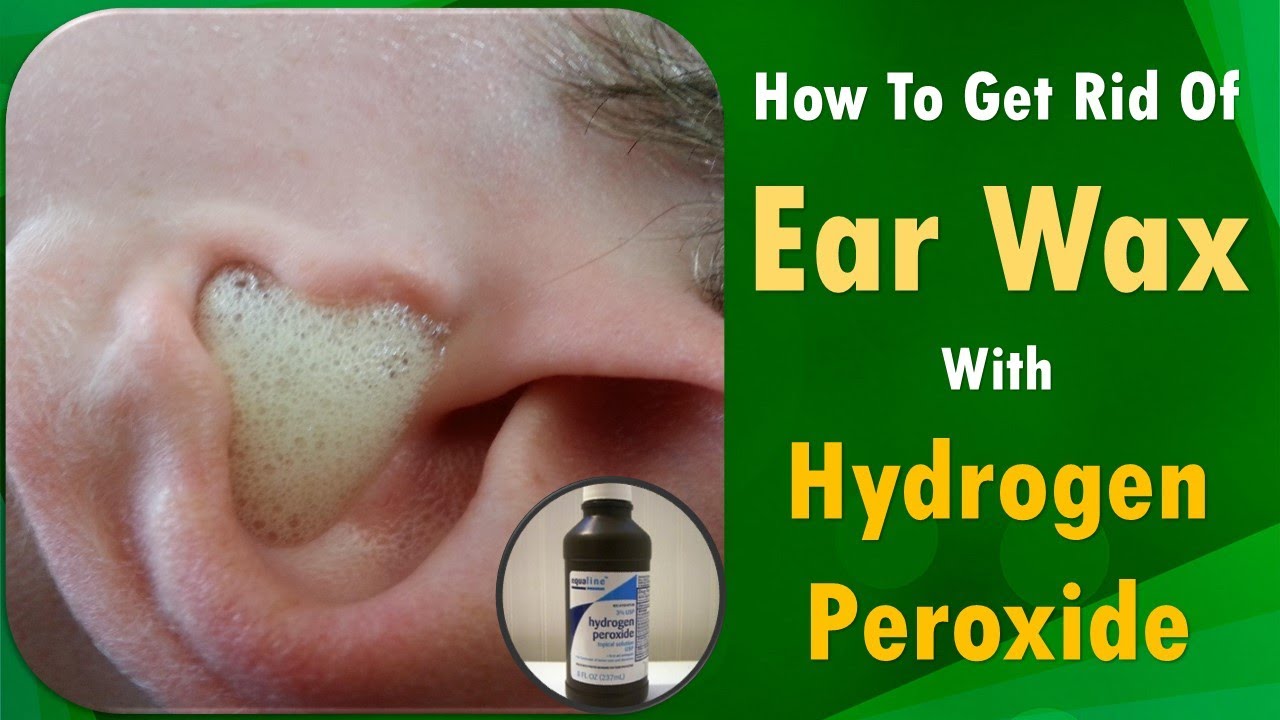

You have a perforated eardrum or have grommets.Follow the instructions on the softening drops to administer the drops.ĭo not use hydrogen peroxide in the ear (or any other cerumenolytic) if: Cotton buds are often the same size as ear canals, so all they do is push the wax further into the canal. Never use a cotton BUD to administer the drops.Gently insert some cotton wool into your outer ear to keep the drops in your ear overnight.

Cleaning ears with hydrogen peroxide skin#
If you are using hydrogen peroxide on its own, do not use any higher than 3% hydrogen peroxide as this may irritate the skin inside your ear canal. When using ear wax softening drops which contain hydrogen peroxide for blocked ears, it’s imperative that you use them in a safe way so you don’t put your ears at risk.

What Are Ear Wax Drops?Įar wax softening drops, which may or may not contain peroxide, can be bought at most local chemists and help to soften and break down ear wax which has built up in your ear canal. Medical consultation should additionally be sought where you suspect your ear may be infected. Click here to read a fact sheet published by the Victorian Eye and Ear Hospital in Melbourne in the use of peroxide for treating ear infections.

Hydrogen peroxide on its own can also be used to treat external ear infections.
Cleaning ears with hydrogen peroxide manual#
If you are part of the 1 in 20 adults who suffer from cerumen (ear wax) impaction in the population(1), regular use of hydrogen peroxide in the ear may slow the buildup of wax and help to lengthen the time between appointments for manual removal. Hydrogen peroxide can be used as a ‘preventative’ to slow down the buildup of earwax once the ear is cleared. This is why hydrogen peroxide is often combined with a softening agent such as glycerin or oil in order to increase its effectiveness in breaking down excess earwax (e.g. Hydrogen peroxide works by breaking earwax down through the release of gas/bubbles (1), but does not soften the wax. You should also use softening drops with caution if you have a history of repeated external ear infections or suffer from skin conditions such as eczema or dermatitis. When used as directed it is safe to use in your ears, however some people are unable to use wax softening drops OR hydrogen peroxide.įirstly, please be aware you should not use softening drops in your ears if you: It is also available as a stand alone product (hydrogen peroxide 3%) and can be used on its own to remove or prevent the build up of excess earwax. Hydrogen peroxide is an active ingredient in liquid form used in many earwax softening drops. Let’s take a look at some information about hydrogen peroxide and also about earwax cerumenolytics (softening drops) in general. There is a lot of information available over the internet about what you should and shouldn’t put in your ears to remove built-up earwax. But you may also be wondering, ‘is it actually safe to use?’ You may have heard that using hydrogen peroxide in your ears can help to break down or prevent the buildup of excess wax within the ear canals.


 0 kommentar(er)
0 kommentar(er)
